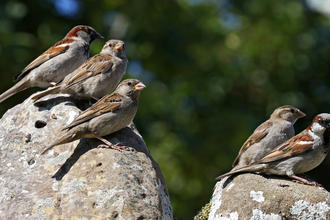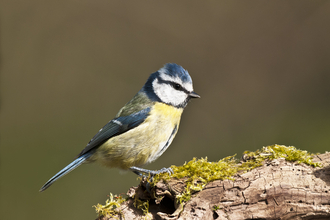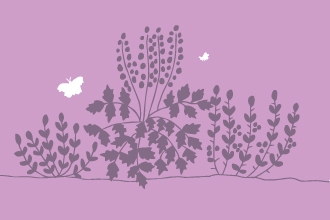The sound of constant chirruping has been our natural soundtrack for hundreds, if not thousands, of years. Sadly, it was much more common in the past than it is now; since 1977 there has been an estimated 71% decline in house sparrows in the UK. This is reflected locally and across the Trust we've spoken to many people who are heartbroken that their daily lives are no longer enriched by these sociable little birds chattering away to each other.
Nesting neighbours
House sparrow by Mark Hamblin/2020VISION
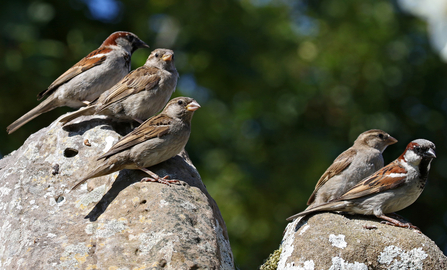
Male and female house sparrows by Wendy Carter
That's the thing about house sparrows; they're very sociable, which makes their presence in our neighbourhoods rather obvious. They nest in loose colonies and in the 'wild', so to speak, you'll find them in dense vegetation. But our homes and gardens, with roof eaves, crevices in walls and, of course, nest boxes, make a great alternative. That need for dense vegetation, though, still exists as they rarely venture far from shelter; a perfect house sparrow patch will have plenty of nesting, feeding and hiding opportunities.
When there's a house sparrow superhighway available - gardens that are connected via hedgerows, large shrubs and even trees - your neighbours may also think that they can lay claim to 'your' sparrows! These green corridors allow movement through the sparrows' territory as well as plenty of insects to feed on. Sparrows are not intrepid explorers; these are home-birds that love their own neighbourhoods and rarely stray more than 2km for their whole lives. If you lose a colony, it'll take a long time before they're replaced.
There are many reasons that you may lose a sparrow colony and they range from the 'tidying up' of gardens and houses to the intensification of and change in land use and development. The good news, though, is that there are things we can do to help sparrows and other feathered friends.
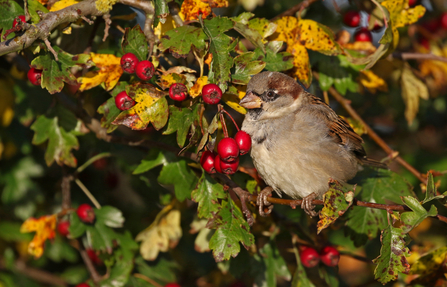
House sparrow by Wendy Carter
The obvious thing is to create that sparrow superhighway mentioned above. Why not follow in the footsteps of sociable sparrows and connect with your neighbours and greenspace gurus to ensure a plentiful supply of dense vegetation to join your spaces. Evergreen honeysuckle, ivy, wild privet and more can provide shelter for birds as well as act as shelter and food sources for plenty of other wildlife too. Take a look at sparrow beaks and you'll realise that they're meant for crunching hard-to-open seeds and the like so berry-laden shrubs and seed feeders will help to keep them hanging around. Adding nest boxes will also give them a boost; sparrow terraces, boxes that provide nesting chambers for at least three pairs of birds, are best.
House sparrows were once so common that people who recorded birds didn't think to mention them. Nowadays, people are helping us to understand more about our chattering neighbours by submitting their locations to us via our Wildlife Sightings project. The wealth of information you're providing is really important - helping us to understand more about house sparrow populations in Worcestershire. Analysis of records submitted in 2020 showed that they have a preference for urban fringes and suburban areas rather than Worcestershire's villages; is this a true picture or is that just where bird recorders are?
It's rare for a day to pass when I don't hear the chattering of 'my' house sparrows. They often sit amongst the ivy covering the fence and spend ages have a good natter. We'll never really know what they're saying, of course, but it's likely that they're passing on information about good feeding spots or the best sheltering spaces. Sparrow social hierarchy, however, is strict and well-ordered so it's just as likely that some individuals are being told exactly where their place in the hierarchy is!


